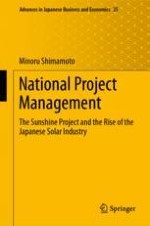2020 | OriginalPaper | Buchkapitel
7. The Politics of Creating New Significance
Case Study 3: The Sunshine Project as a World of Personal Significance
verfasst von : Minoru Shimamoto
Erschienen in: National Project Management
Verlag: Springer Singapore
Aktivieren Sie unsere intelligente Suche, um passende Fachinhalte oder Patente zu finden.
Wählen Sie Textabschnitte aus um mit Künstlicher Intelligenz passenden Patente zu finden. powered by
Markieren Sie Textabschnitte, um KI-gestützt weitere passende Inhalte zu finden. powered by
